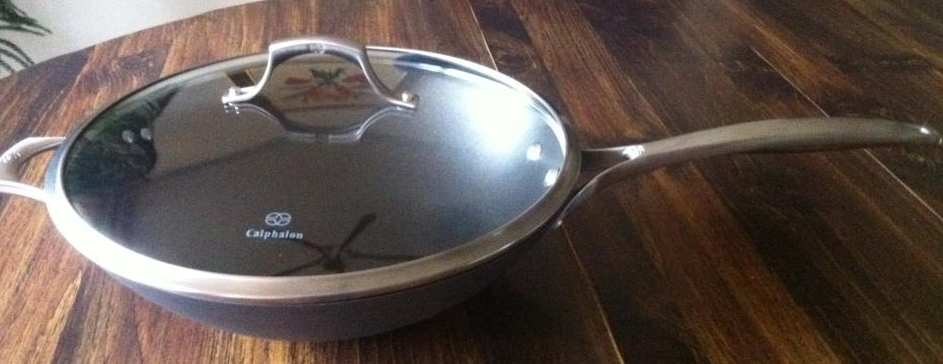The biggest lesson I learned from trial and error is the stock you use is everything! I will start by just stating that if you are going to use store bought stock, don’t bother – just go out to a good restaurant and order it. I use a bold beef stock (see my Beef Stock post). Depending on how bold it is (milk chocolate vs. dark chocolate color), I either use it as is, or cut it with a 75% beef stock – 25% chicken stock (also homemade) mix. With a good stock, the rest is pretty easy!
- 1 quart of stock
- 4 medium to large yellow onions
- 1/4 cup of dry sherry
- 2 bay leaves
- 1 bundle of thyme
- 5 Oz of Gruyere cheese
- 1 baguette (or French bread)
- Kosher salt
- Chives (optional)
Special Equipment:
- Oven safe individual serving soup crocks
Because I do not make huge batches of soup, I find that I need to use a large sauté pan to cook down the onions because they will not fit in the sauce pan I use for the soup. I you are making a large batch in a large soup or stock pot, you can likely cook down the onions in the same pot. Coat the bottom of the pot or pan with a good olive oil and then over medium heat, cook down the onions to past just sweating them down, but stopping short or caramelizing – it helps to cover the onions during the first part of this step. Onions contain a lot of sugar, so salt the onions generously while they are cooking down. You almost cannot over salt that this point. Some recipes will tell you to caramelize the onions, but once again there is a texture issue. The onions are going to simmer in the soup for about an hour, so if you go all the way to caramelized, you end up with onion mush in the end product. What you want is for the onions to have some body and texture (tooth feel). Once you have cooked down the onions, add the sherry and allow it to reduce by half.
Now combine the onions, stock, bay leaves and thyme (both in a bouquet garni) in the same pot (I use a 3 Qt sauce pan), bring it to a boil, reduce it to a simmer, then allow it to simmer partially covered for 1-hour. You should taste it once in a while and add salt as needed. The onions will continue to release sugar so don’t be perplexed of you seem to always be adding salt!
While the soup is simmering, slice the baguette into ½ to ¾" slices (2 per serving), lightly brush each with olive oil, then toast under the broiler until golden brown.
Once the soup is done, fill each crock about ¾ full (ensuring you get both liquid and lots of onions), add two toasted baguette slices to each crock, then fill each crock up with more soup.
Top each filled crock with about 1.5 Oz of grated cheese, and place the crock under the broiler until the cheese is melted and bubbly, with just a bit of a burn. Garnish with chives and enjoy!


